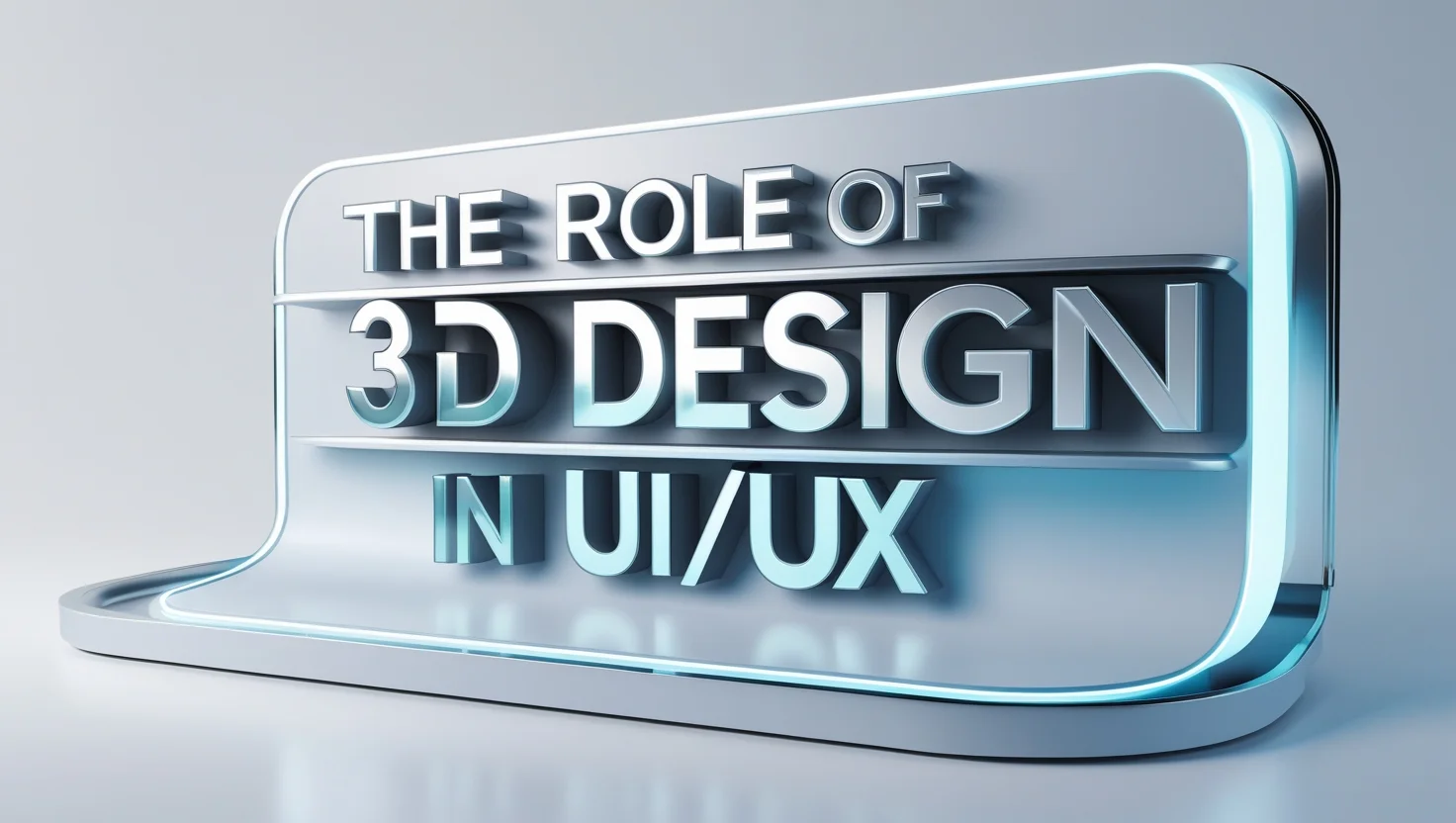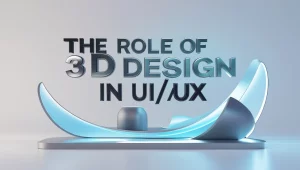But what role will it play in the rapidly advancing realms of UI/UX? This article takes a closer look at the trajectory of 3D design, exploring its current influence, anticipating its impact, and predicting the trends that will shape how we interact with technology in the near future. Prepare to step into a dimension where design becomes immersive, intuitive, and undeniably three-dimensional.
Table of Contents
- The Evolution of 3D Design in the UX Landscape
- How Realism and Depth Are Redefining User Interfaces
- Challenges and Opportunities in integrating 3D Elements
- The Influence of AR and VR on 3D design Trends
- Crafting Intuitive Interactions with 3D Models
- Preparing for a 3D-Driven Future in UI/UX Design
- Q&A
- Wrapping Up
The Evolution of 3D Design in the UX Landscape
The journey of 3D design in UX has transitioned from being an experimental novelty to becoming a powerful tool for creating immersive, engaging experiences. Modern interfaces are blending 3D elements to bridge the gap between digital and physical worlds, offering users a sense of depth, realism, and interaction that 2D designs simply couldn’t achieve. In the earlier years, 3D was reserved for specialized applications such as gaming or architectural design. However, advancements in rendering technologies and browser compatibility have normalized its use in web and app interfaces. Today, we see 3D seamlessly integrated into product showcases, e-commerce interactions, virtual tours, and even onboarding flows, demonstrating its vast potential across industries.
As 3D design evolves, frameworks like WebGL and tools such as Blender and Three.js have allowed designers to harness intricate visual elements without compromising performance. But it’s not just tech advancements driving this change—a shift in user expectations towards hyper-realistic and tactile interfaces has made 3D a key differentiator in UX design. Below are some trends influencing this meteoric rise:
- Micro-interactions: Subtle 3D animations (like button presses or hover effects) enhance usability.
- Interactive product previews: Users can rotate and explore objects in real-time.
- Augmented reality: Integrated AR features enable blending of 3D design with real-world environments.
| Era | Key Focus | Impact |
|---|---|---|
| 2010s | Experimental 3D in UI | Primarily novelty; low adoption |
| 2020s | Integration in UX workflows | High across e-commerce and VR |
| 2025 | Mass adoption in UI/UX | Mainstream feature in design toolkits |
How Realism and Depth Are Redefining User Interfaces
Moreover, the use of depth and layering in UI enhances clarity while preventing facts overload. Unlike traditional flat designs where elements compete for attention,3D interfaces create a structured hierarchy, allowing users to intuitively distinguish between primary and secondary actions. Such as:
- Foreground elements (e.g., call-to-action buttons) are accentuated with bold lighting effects.
- Background components (e.g., decorative visuals) use softer hues and reduced opacity, staying visually subtle.
- Dynamic transitions like smooth zoom or parallax scrolling enrich interactions and aid in storytelling.
| 3D Design Element | Impact |
|---|---|
| Realistic Lighting | Improves focus on actionable items. |
| Layering Effects | Reduces cognitive load for users. |
| Interactive Shadows | Creates depth and intuitive visuals. |
Challenges and Opportunities in Integrating 3D Elements
Despite these challenges, 3D technology opens doors to unparalleled creativity and interaction. Designers can craft visually immersive interfaces that delight users and build stronger first impressions. Moreover, with the rise of WebGL and advanced 3D tools, developers now have easier access to frameworks that streamline workflows. Key opportunities include:
- Enhanced personalization through customizable 3D elements tailored to user preferences.
- Cross-industry applications in gaming, healthcare, and e-commerce.
- Engagement-oriented design that draws users into unique virtual experiences.
Below is an example of how challenges and opportunities in 3D integration may weigh against each other:
| Challenges | Opportunities |
|---|---|
| High resource demand | Immersive storytelling |
| Complex accessibility adaptations | New creative possibilities |
| Steeper learning curve | Enhanced user engagement |
The Influence of AR and VR on 3D Design Trends
Advancements in augmented Reality (AR) and Virtual Reality (VR) are reshaping the landscape of 3D design, pushing it beyond static visuals into immersive, interactive experiences. As AR/VR begins integrating deeply into everyday devices and platforms, designers are focusing on creating dynamic environments that respond to real-time user inputs.
For UI/UX, this means interfaces are no longer confined to flat surfaces but are evolving into three-dimensional, spatial interactions. Gestural navigation, holographic menus, and dynamic object scaling are becoming pivotal design elements, transforming how users interact with digital products. This transition is also encouraging a shift toward creating ergonomic, life-like designs that feel both intuitive and engaging when experienced through AR glasses or VR headsets.
Additionally, these technologies are influencing 3D design trends through accessible prototyping tools and rapid development workflows. Tools like AR-focused design platforms and VR UI simulators enable designers to seamlessly test how users will interact in a hybrid digital-physical world. The use of real-time 3D rendering tools is ensuring that textures, lighting, and animations now balance visual appeal with usability across AR/VR devices. Here’s a snapshot of how AR and VR are affecting specific 3D design priorities:
| 3D Design Priority | Impact of AR/VR |
|---|---|
| Realistic Textures | Enhanced immersion in virtual spaces. |
| Interactive prototypes | Faster user behavior testing in simulated environments. |
| Dynamic Scaling | Improved adaptability for diffrent devices. |
Crafting Intuitive Interactions with 3D Models
To further elevate this experience, some platforms are now integrating real-world analogies into their designs.Consider a virtual object that reacts to gravity when tilted or moves fluidly with a swipe gesture—these mechanics mimic physical interactions, making the digital experience feel intuitive. Below is a comparison of traditional interaction approaches versus enriched 3D interaction strategies:
| Traditional Approach | 3D interaction Strategy |
|---|---|
| Static visuals with click-based navigation | Dynamic 3D objects with drag-and-rotate gestures |
| Limited user feedback | Interactive responses (e.g., hover changes, spatial effects) |
| Predictable, flat interaction layers | Immersive environments using depth and parallax |
Preparing for a 3D-Driven Future in UI/UX Design
To get started, commit to experimenting with popular 3D platforms such as Blender, Cinema 4D, or more UI-focused tools like Spline. Additionally, understanding real-time rendering technologies like WebGL or Three.js is critical, especially as the demand for web-based, interactive 3D content surges. Readiness isn’t limited to tools—it also requires a mindset shift, one that embraces multi-sensory design and spatial thinking as key components of future interfaces.
- Skill Building: Invest in learning 3D modeling, animation, and rendering techniques.
- Adaptability: Stay updated on evolving frameworks and libraries that support 3D integration in design.
- User Testing: Ensure 3D elements enhance usability and accessibility rather than simply adding aesthetic appeal.
- Collaboration: Partner with 3D artists or XR engineers to create seamless and innovative designs.
| Skill | Focus Area | Recommended Tools |
|---|---|---|
| 3D Modeling | Building and texturing 3D assets | Blender, ZBrush |
| Interactive Design | integrating interactive 3D features | Spline, Three.js |
| Prototyping | Real-time design visualization | Figma + plugins, Unity |
Q&A
Q&A: The Role of 3D Design in UI/UX: Predictions for 2025
Q1: how is 3D design currently influencing UI/UX design?
A: 3D design is reshaping UI/UX by adding depth, interactivity, and realism to digital experiences. From 3D buttons and immersive product showcases to spatial interfaces in AR/VR, it brings a layer of engagement that flat design simply cannot achieve. Today, it’s primarily used to create moments of delight, but its functional applications are quickly expanding.
Q2: What are experts predicting about 3D design’s role in 2025?
A: By 2025, 3D design is expected to move beyond aesthetics and become a core part of functional UX. Experts anticipate its integration into everyday interfaces, from holographic displays to advanced mixed-reality environments. Additionally, the rising affordability of hardware capable of rendering 3D experiences will drive broader adoption across industries, making it a norm rather than an exception.
Q3: Will accessibility be a challenge for 3D design in UI/UX?
A: Accessibility is indeed a critical concern, as 3D interfaces can inadvertently alienate users with visual, cognitive, or motor impairments. However, innovations like voice-guided navigation, tactile feedback, and adaptive 3D views are being developed to ensure inclusivity. The shift toward more accessible 3D design principles will likely gain momentum as industry standards evolve over the next few years.
Q4: How are emerging technologies like AI shaping 3D UI/UX design?
A: AI is playing a transformative role by streamlining 3D design workflows and optimizing user interactions. Predictive algorithms can tailor 3D experiences in real time, creating personalized interfaces that respond dynamically to user behavior. From automating asset generation to enhancing usability with adaptive designs, AI will be a driving force in scaling 3D experiences by 2025.
Q5: Are there any industries leading the charge in 3D UI/UX innovation?
A: Industries like gaming, e-commerce, real estate, and healthcare are at the forefront of 3D UI/UX innovation. For example, virtual shopping experiences, 3D medical imaging interfaces, and immersive property tours are becoming increasingly common. As technology continues to mature, expect sectors like education and remote work to adopt 3D interfaces for training, collaboration, and visualization purposes.
Wrapping up
As we peer into the horizon of 2025, it’s clear that 3D design is no longer just a stylistic flourish—it’s becoming a transformative force in UI/UX design. By blending immersive storytelling with functionality, 3D is pushing the boundaries of how users interact with digital experiences. Though, its potential comes with challenges—balancing visual complexity with usability, accessibility, and performance will determine its true impact on the design landscape.
As designers continue to experiment, innovate, and adapt, one thing is certain: 3D design is not a final destination but a journey. It invites us to explore new dimensions of creativity and connection, offering a glimpse into the yet-to-be-written future of UI/UX. The next leap might potentially be closer than we think—and as always, the users will show us the way.



